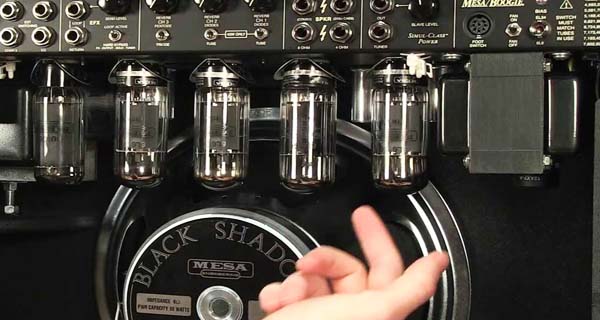Amplifier Low Volume Problem [Reason & 5 Ways to Fix]
An amplifier is a great device that amplifies sound. But this device is not free from producing problems too. As an amp has to come with different technical features, it has to deal with some major technical issues too.
And then, the amplifier low volume problem stands out as the primal problem that it comes with. There is no better amp that has not shown this type of volume problem before. If you are acquainted with an amp and its internal structure, you can tell that this type of sound problem is so common.

Therefore, you should not panic if you see your tube amp with a low-volume problem. There are some definite ways following which, you can get your old amp back with the right sound system.
# Table of Contents =>
Reasons of Your Amp Volume Sounds Low:
An amp comes with some significant features. It carries speakers, a preamp, and a power amp to be conducted. Apart from these features, an amp follows some other settings. These internal settings together make the amp capable of amplifying sound. But being a sensitive device of sound, an amp has to maintain some basic rules while transferring a signal to its speakers. If any amp fails to do that low volume problem occurs.
1) An Error of the Operator:
An amp comes with some operator to conduct its business. These operators are mainly involved in receiving and transferring signals to create sound through the speaker. But when these operators show an error sign, they cannot send signals to the speakers.
Because of the sending and receiving problem, the speaker gets a huge interruption and eventually produces a low volume problem.
2) Disconnection of the Wire of Speaker:
As we have mentioned already that an amp is a complicated device if we examine its internal feature. There are wires that are internally connected. When these wires get loosened anyhow, the amp starts to make subterfuges and stops working properly.
If the wire of the speakers gets loosened somehow, then it will get fluctuated and break up signals. Thus, it fails to produce a robust full-volume sound. An amplifier-distorted sound problem will occur as a result too.
3) Too Much Usage:
The settings in an amp require some special treatments sometimes. As the power amp controls most of the major parts of an amp, it needs rest too. The nonstop conduction of an amp and the contribution of the power amp can lower the energy of the whole device.
In this situation, the power amp might stop working for a moment to cool its temperature. Therefore, it does not send the signal to speakers too. As a result, you cannot hear sound coming from your amp at all.
4) Bad Tubes:

Tube amp comes with tubes and with their help, the speaker can produce a boastful sound. But many bad tubes can interrupt the whole process. A tube amp hums are not affected by volume but maybe because the tubes are bad. A bad tube causes an amplifier humming sound problem.
5) Blowing of Main Fuse:
If you see your amp is alright from the inside out, you are maybe missing out on some important things. A fuse is a very common feature of an amp. And it tends to blow frequently. When it receives wattage power more than it can handle, then the fuse gets blown. Consequently, the speaker of the amp fails to produce a good amount of sound.
6) Buzzing Out:
This buzzing-out problem occurs often due to the FX loop. The FX feature is now very common in an amp. When this loop has got layers of dust on it due to low maintenance, it helps the speaker lose its sound. Also, the jack of this feature creates the same type of problem because of the same reason.
How to Fix Amplifier Low Volume Problem?
You can fix the low volume problem of your amp by yourself. An amp is not that much complicated to handle if you just learn its basic structure just once. Only then you can come out with rapid solutions when your amp will be facing a low-volume problem.
Step 1: Give It a Rest –
First thing first, you need to examine the runtime of your amp simultaneously. If you see your amp running for too long and the sound is getting dimmed slowly, make the amp and disconnected it immediately.
Give it a rest for about 10 minutes and let it cool down. After that connect the amp and let’s check out the sound problem again.
Step 2: Check the Loosened Wires –

If you see that the speaker of the amp is still providing low sound, you need to check the wires this time. Unplug the wire connections and plug them in again properly. For a better result, examine the external wires and if you see any wire has got loosened, tighten that up.
After examining the loosened connections, and plugging them in the right place, restart the amp. This time the amp should work with its usual range of sound.
Step 3: Check the Tubes –
If you see the connection is all tight and still the speaker is behaving shitty, you need to take the next step. Here, you need to examine some major parts of the amp. Make sure the amp is disconnected from the electrical connection. Check the tubes including the power tube, preamp tube, and other tubes.
Bring a penlight and check the tubes. The tubes come with galvanized layer. If you see the plates have become rusty, you need to clean that tube and remove the rusty plates as soon as possible. Amend the tube and check if the preamp and power tube working again or not.
Step 4: Check the fuse –

Many times the blown fuse makes the speaker dull. And consequently, the speaker does not get enough signals. If the tubes are all fine, your next step is to check the fuse. The fuse gets blown often a time when it comes to an amp.
The excessive wattage power is responsible for the blowing of the fuse. That’s why check the fuse and if it gets blown then bring about a new one and attach it with the connections properly.
Step 5: Check the Jack of FX Loops –

This is the last possible step. If nothing works then try out this step. It might seem a little complicated but can bring you an immense result. The send jack of this FX loop feature stops working due to the jam of signal and dust.
In this situation, you need to check the jack and clean it with a cleaner. A contact cleaner would work just fine. Also, an alternative attachment of wire between the send jack and return jack of the FX loop will demolish the low volume problem too.
If you follow the steps properly one by one, the speaker should start to sound fine and usual at one point. But if still there is the same low volume problem, you need to consult an expert.
To make the sound louder of an electric musical instrument, an amp has been serving for years. Because of its heavy usage, an amp has to go through a lot to cope with the desire of a musician. That is why the amplifier low volume problem is a familiar problem that most users face. But the solutions to this problem given above are reliable too.
FAQs –
Question 1. Why does my volume sound so low?
Answer: Be it a speaker or an amp, low-volume sound is a common problem. Sometimes the speaker is layered in dust. It clogs the way through where the sound passes. If you see a low-volume problem, you should instantly, first clean your speakers first with a contact cleaner.
Question 2. How can I increase the volume of my amplifier?
Answer: There are several ways in which you can increase the volume of your amplifier. You can add a booster pedal that is friendly to the speaker. Also, by swapping out the speakers, you can increase the volume of the amp. Besides, by adding a microphone, things become easier to make the sound of your amp louder.
Question 3. How do you know if your amplifier is blown?
Answer: You will face an unnecessary amplifier humming sound problem when your amp is blown. There will be a break-up and interruption in the connection. As a result, you might face amplifier-distorted sound problems too.
Last Updated on March 31, 2023 by Perry Garner


